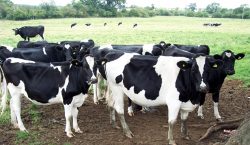

It certainly surprised me and got me thinking about the decline in the diversity of our diet. This fact was revealed by Bio Innovation Zimbabwe (BIZ), an organisation focused on strengthening wealth and food security by promoting underutilised species as new crops for smallholders – at a meeting of organisations working with sustainable livelihood development. Du-ring my week this theme constantly recurred.
A colleague, passionate about traditional and unrefined food came to work complaining of low energy because she had left behind her prepared breakfast of local brown rice and had instead bought refined white bread rolls at a supermarket, and was already sleepy after the initial energy boost from her unaccustomed dose of refined carbohydrates.
I finished the week at a demonstration and tasting of delicious traditional foods and local recipes at a local girls school, organised by CADS – Cluster Agricultural Development Services – who are part of a network of community organisations working on the promotion of traditional foods and value addition through small scale food processing.
So I started searching the web to see what has happened to our food consumption patterns and what mass food production and faster modern lifestyles has done to the way we eat and how now, a lack of cash often translates into lack of food and often leads to malnutrition.
I found an article written in the mid 90s talking about the significant role that wild vegetables had played in the traditional diet and bewailing the fact that genetic reso-urces of wild and semi-wild indigenous plants were rapidly being lost, as a result of vegetation change due to overgrazing, collection of fuelwood and bush-clearance for human settlement, agriculture and other uses. This loss also means reduced food security for households since indigenous wild and semi-wild plants often form an important complementary food source.
One of my fondest food memories is of a visit many years ago to a friend’s rural Matabelela-nd home where his ageing mother cooked us a kind of heavy cake made with nyimo (roundnuts), groundnuts and maize flour.
It was naturally sweet and felt like the kind of food that would keep you going for days on long treks through the bush. It was there too that I was first introduced to the wild vegetable elude – nyevhe in Shona – growing in profusion around the homestead.
So I enjoyed the nyeve cooked with peanut butter at the food tasting event. The school girls had spent the morning cooking with staff members of CADS and we were offered a huge variety of dishes.
There was a rich stew of roadrunner chicken, traditionally dried meat cooked in peanut butter or on its own as biltong as well as mopani worms and goat tripe. Various types of sadza were served – made from rapoko and sorghum as well as maize. A friend was taking home some ‘chocolate’ sadza for her grandson.
There were also sweet potato fritters and cakes, cow pea pies and delicious nhopi – pumpkin with dovi.
But my favourite was the groundnut cake – also reminiscent of that long ago rural journey through Matabele sands.
The event was a practice run in preparation for cooking foods during the Processed Products Food Fair to be held at the Nelson Mandela Hall at the Harare Showgrounds on July 15 and 16.
This will see small-scale farmers showcasing their products and offering them for sale to the public on those days.
I look forward to it, and to sampling more healthy, local products.
– g.jeke@yahoo.com